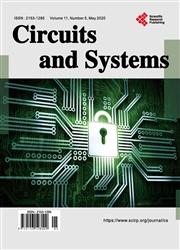A Comparison Study of Diode-String ESD Clamps for CMOS Input Protection
引用次数: 0
Abstract
Based on 2-D device simulations and mixed-mode transient simulations, DC and transient discharge characteristics of a usual diode string utilizing a standard CMOS process, and a diode string utilizing a triple-well CMOS process, which can serve as an essential VDD-VSS clamp device for CMOS input ESD protection were compared. Transient discharge characteristics including peak voltages developed across gates oxides of transistors in input buffers, lattice heating inside ESD protection devices, and ratios of discharge current components at its peak inside the diode-string clamp were compared. DC standby current levels added per each input pad structure, which are the critical parameters determining usefulness of the devices, were also compared. We showed that the diode-string devices in comparison can serve successfully as a VDD-VSS clamp device for ESD protection by virtue of the dominant pnpn thyristor-related conduction mechanisms. Optimization of design parameters including anode-cathode contact spacing in each diode in the string, device width of the diode string, and number of diodes in the diode string was performed to present transient discharge and DC characteristics of some recommendable design examples, which can serve as a guideline in designing diode-string clamp devices.用于CMOS输入保护的二极管串式ESD钳位的比较研究
基于二维器件仿真和混合模式瞬态仿真,比较了采用标准CMOS工艺的普通二极管串和采用三阱CMOS工艺的二极管串的直流和瞬态放电特性,这两种二极管串可以作为CMOS输入ESD保护的重要箝位器件。比较了瞬态放电特性,包括输入缓冲器中晶体管栅极氧化物产生的峰值电压、ESD保护器件内的晶格加热以及二极管串箝位内峰值放电电流分量的比值。还比较了每个输入板结构增加的直流待机电流水平,这是决定器件实用性的关键参数。我们发现,相比之下,二极管串器件可以成功地作为VDD-VSS箝位器件,利用pnpn晶闸管相关的主导传导机制来实现ESD保护。通过优化设计参数,包括串中每个二极管的阳极阴极接触间距、二极管串的器件宽度和二极管串中的二极管个数,给出了一些推荐的设计实例的瞬态放电和直流特性,为设计二极管串箝位器件提供了指导。
本文章由计算机程序翻译,如有差异,请以英文原文为准。
求助全文
约1分钟内获得全文
求助全文

 求助内容:
求助内容: 应助结果提醒方式:
应助结果提醒方式:


